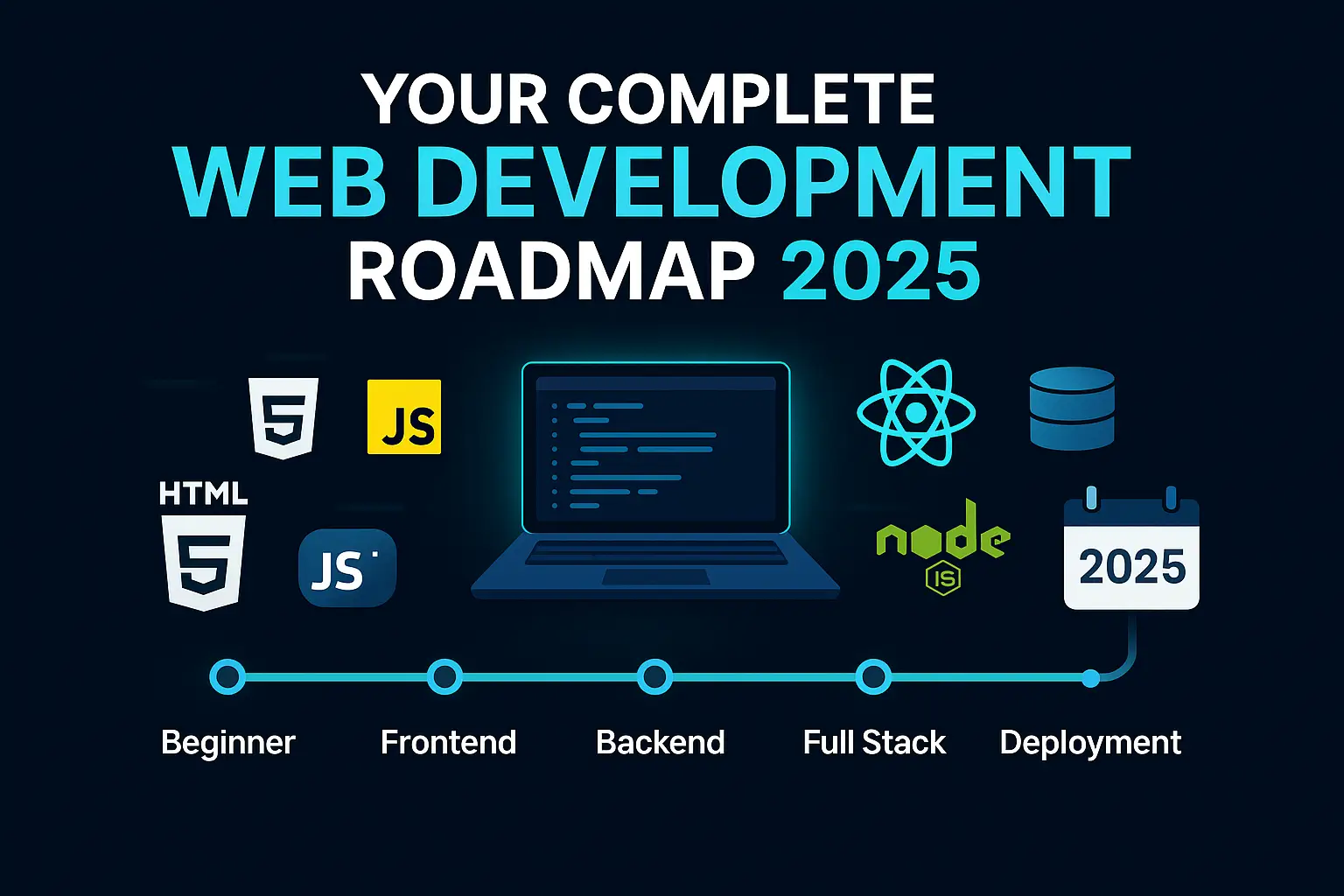
Your Complete Web Development Roadmap for 2025
Embarking on a journey into web development can be both exciting and overwhelming. With the digital landscape continually evolving, having a structured roadmap is essential to navigate the myriad of technologies and tools available. This guide provides a step-by-step pathway to becoming a proficient web developer, incorporating low-competition keywords to enhance your learning and visibility.
1. Understanding Web Development
Web development encompasses the creation and maintenance of websites and web applications. It is broadly divided into:
Frontend Development: Focuses on the user interface and experience.
Backend Development: Deals with server-side operations and databases.
Full-Stack Development: Combines both frontend and backend skills.
Understanding these areas is crucial for determining your learning path and career trajectory.
2. Mastering the Basics
HTML and CSS
Begin with HTML (HyperText Markup Language) and CSS (Cascading Style Sheets) to structure and style your web pages. These are foundational technologies for any web developer.
JavaScript
Learn JavaScript to add interactivity to your websites. Focus on understanding variables, functions, loops, and events.
Responsive Design
Ensure your websites are mobile-friendly by mastering responsive design techniques using media queries and flexbox.
3. Advancing Frontend Skills
CSS Frameworks
Explore frameworks like Bootstrap and Tailwind CSS to expedite your styling process and maintain consistency across your projects.
JavaScript Libraries
Delve into libraries such as jQuery to simplify DOM manipulation and event handling.
Version Control
Learn Git and use platforms like GitHub to manage your codebase and collaborate with others.
4. Diving into Backend Development
Server-Side Languages
Choose a backend language to learn, such as:
Node.js: JavaScript runtime for server-side programming.
Python: Known for its readability and frameworks like Django.
PHP: Widely used for web development with frameworks like Laravel.
The Digital Elevator
Databases
Understand how to interact with databases:
SQL Databases: Like MySQL and PostgreSQL.
NoSQL Databases: Like MongoDB.
APIs
Learn to create and consume RESTful APIs to enable communication between different software applications.
5. Embracing Full-Stack Development
Combine your frontend and backend skills to become a full-stack developer. This includes:
Authentication: Implement user login systems.
Deployment: Host your applications using services like Heroku, Netlify, or Vercel.
Testing: Write tests to ensure your application functions correctly.
6. Building Projects
Apply your knowledge by building real-world projects:
Personal Portfolio: Showcase your skills and projects.
Blog Platform: Create a content management system.
E-commerce Site: Develop a shopping platform with cart functionality.
These projects not only reinforce your learning but also enhance your portfolio for potential employers or clients.
7. Continuous Learning and Networking
Stay updated with the latest trends and technologies:
Follow Blogs: Read articles from platforms like Medium and Dev.to.
Join Communities: Participate in forums such as Stack Overflow and Reddit’s r/webdev.
Attend Meetups: Engage in local or virtual tech meetups and conferences.
Conclusion
Embarking on the web development journey requires dedication and continuous learning. By following this roadmap, you can systematically build your skills and transition into a successful web development career. Remember, the key is consistency and practical application.